Reclining Nude with Raised Shirt and Garters
Egon Schiele (1917)
Richard Nagy
“Schiele is recognised as one of the greatest draughtsmen of the 20th century. Throughout his life, women fascinated him,” says Nina Hartl, a director of the Richard Nagy gallery. “Schiele has an unerring genius for scrutinising the human qualities in the women he draws. This interest in women matured with his years and circumstances, and remained with him until his death. His late drawings are more hemmed in by the convention of erotica; voyeurism tends to displace his former engagement with his nudes. This work is a prime example of his late drawings.” The work is priced between $1m and $1.5m.
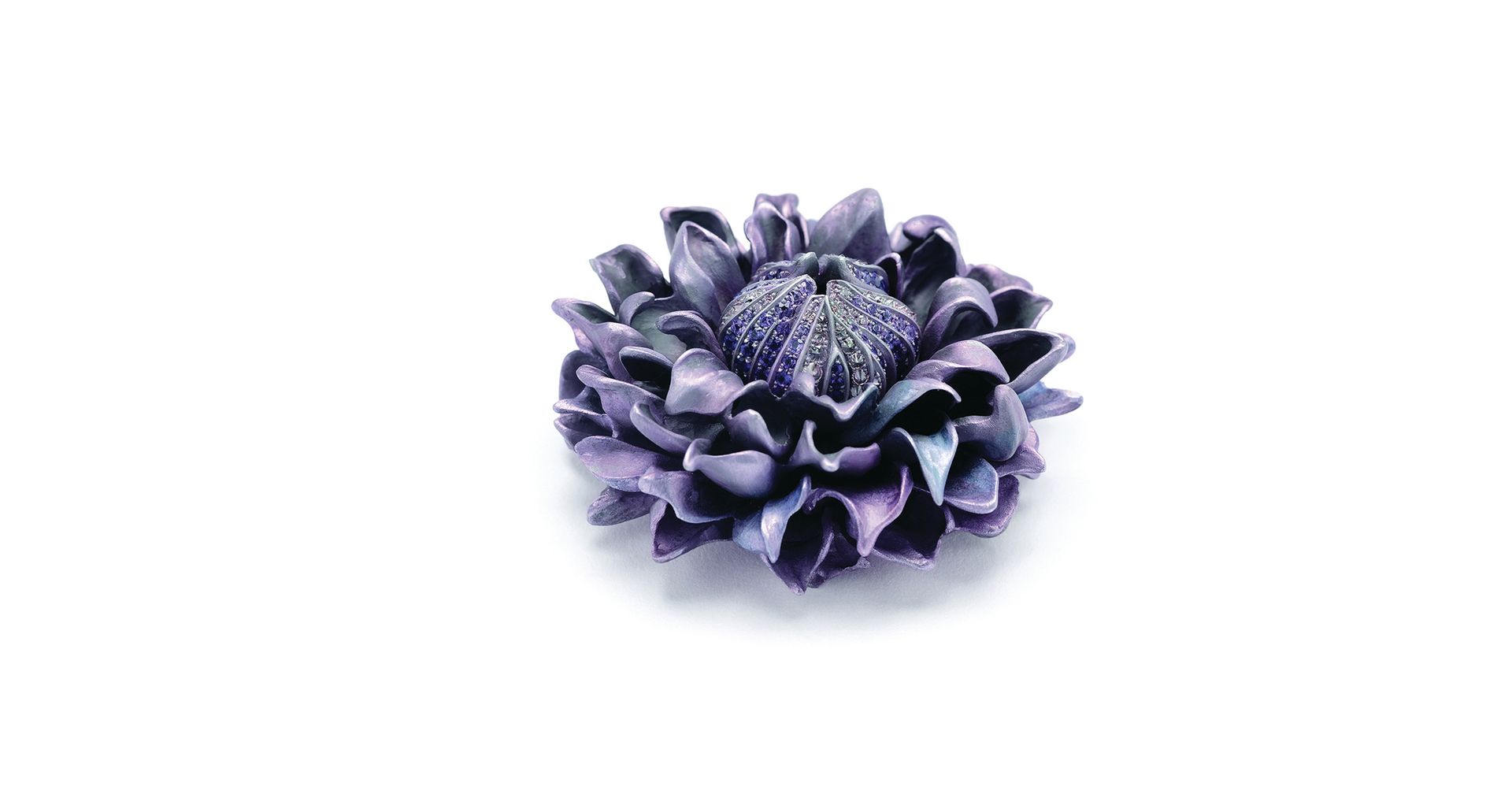
“Clematis” Brooch
Hemmerle (2016)
Hemmerle’s innovative, and rather unorthodox, desire to pair top-notch gems with often-overlooked materials such as iron, coral and wood has become its calling card. At Tefaf, this fourth-generation designer of haute joaillerie will preview its latest collection, crafted from aluminium—a metal now associated with everything from drinks cans to fences, but prized for its rarity in the mid-19th century (guests at Napoleon’s table dined off aluminium plates, which were more precious than gold or silver ones). Hemmerle’s aptly titled [AL] Project features around 15 brooches and pairs of earrings crafted from aluminium and gemstones. The metal has been anodised to take on the perfect hue with which to show off the array of gemstones—diamonds, garnets, sapphires and/or aquamarines—set within it. Prices start at €24,800.
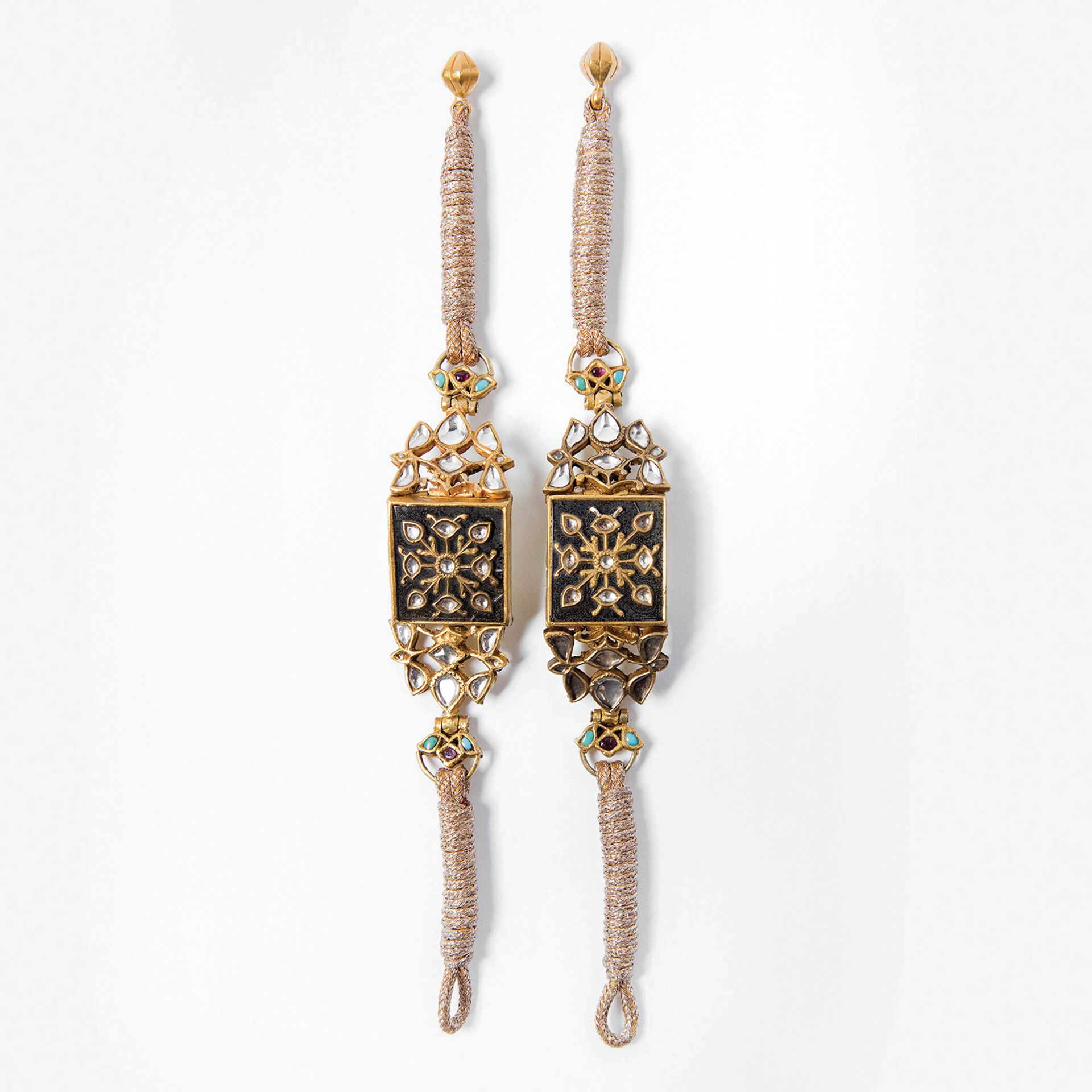
Pair of gold Banj bands
19th century, Benares, Uttar Pradesh, India
Van Gelder Indian Jewellery
Bands such as these, embellished with gemstones sel ected for their supposed powers to ward off ill effects, were worn on the upper arm as talismans to protect the wearer in battle. The Mughals adopted the tradition from the mighty Timurids. Later, as their decoration became more extravagant, Banj bands were used to flaunt the wearer’s wealth and political clout. This example features rock crystals, turquoise and rubies in a traditional gold Kendal setting. A similar piece is illustrated in an album of jewellery designs commissioned by Shuja-ud-Daula, the ruler of Faizabad, from the French adventurer Jean Baptiste Gentile in 1771. The Dutch dealer Van Gelder, which specialises in historical Indian jewellery, is asking €19,800 for the pair.

Fruit wood netsuke of a monkey inspecting a tortoise
Signed Tomokazu (1830s), Gifu, Japan
Sydney L. Moss
Even the most poker-faced collector is likely to crack a smile when they see this netsuke (a toggle used to suspend articles from the sash of a kimono) depicting an inquisitive monkey with eyes of inlaid horn, its legs and left arm wrapped around a tortoise that has wisely retracted its head, tail and legs. What appears at first glance to be a quaint scene is actually teeming with innuendo: the primate’s inability to coax the tortoise from its shell alludes to the “unpredictability of the male sexual organ” and the frustration of not being able to breach a woman’s armour to steal her virtue. The gallery has attributed the piece to Tomokazu III, the last in a line of great Japanese carvers of the same name. It is on offer for £25,000.
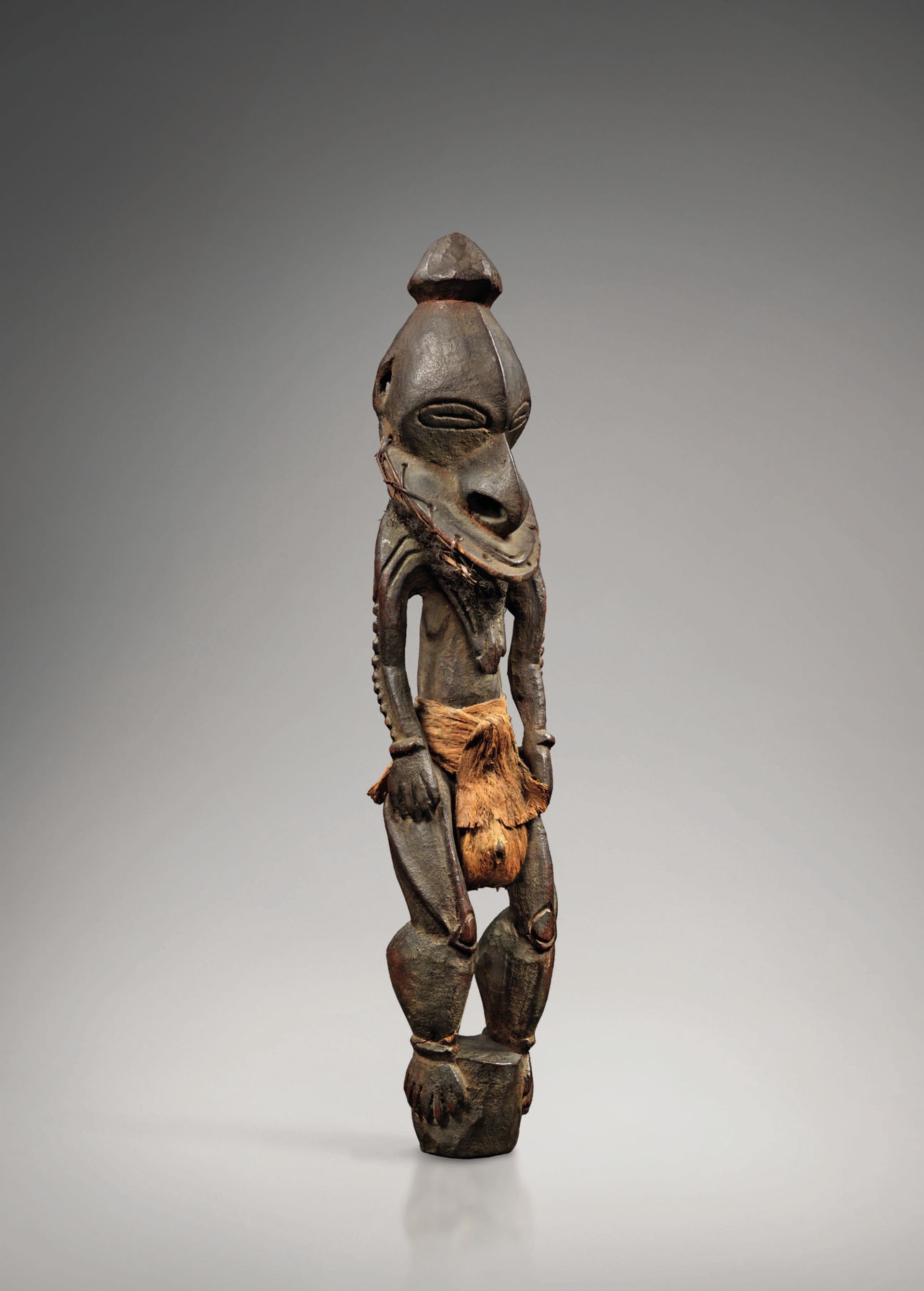
Kandimboang statuette
Late 19th century, Papua New Guinea
Galerie Laurent Dodier
Laurent Dodier, the French specialist in tribal art, is bringing 15 African and Oceanic works to exhibit in Tefaf’s Showcase section, which gives dealers a one-off chance to show at the fair. The pieces include this late 19th-century “kandimboang” or male ancestral figure, with an elongated head and a beak-like nose. It comes from the Sepik River, Murik Lakes area of Papua New Guinea. It was formerly in the collection of the Parisian antiques dealer André L Véel, whose client list included the art dealer and collector Charles Ratton and the ethnologist and anthropologist Claude Lévi-Strauss. It is priced in the region of €85,000.

Pair of German wheel-lock holster pistols with the arms of Friedrich Wilhelm I
Christoph Dressler (1596)
Peter Finer
This pair of ivory-inlaid wheel-lock pistols was made in 1596 by Christoph Dressler for Friedrich Wilhem I, the Duke of Saxe-Weimar, to wear with court dress; although they are working guns, they would not have been intended for ordinary use, being so highly decorated. They are also in almost mint condition because they come out of the Electors of Saxony’s great display armoury, created to proclaim their role as arch-marshals of the Holy Roman Empire. Saxony is in East Germany and under its post-Second World War communist regime, the armoury sold many items to fund the Dresden museums. Peter Finer is asking a six-figure sum for the pair.
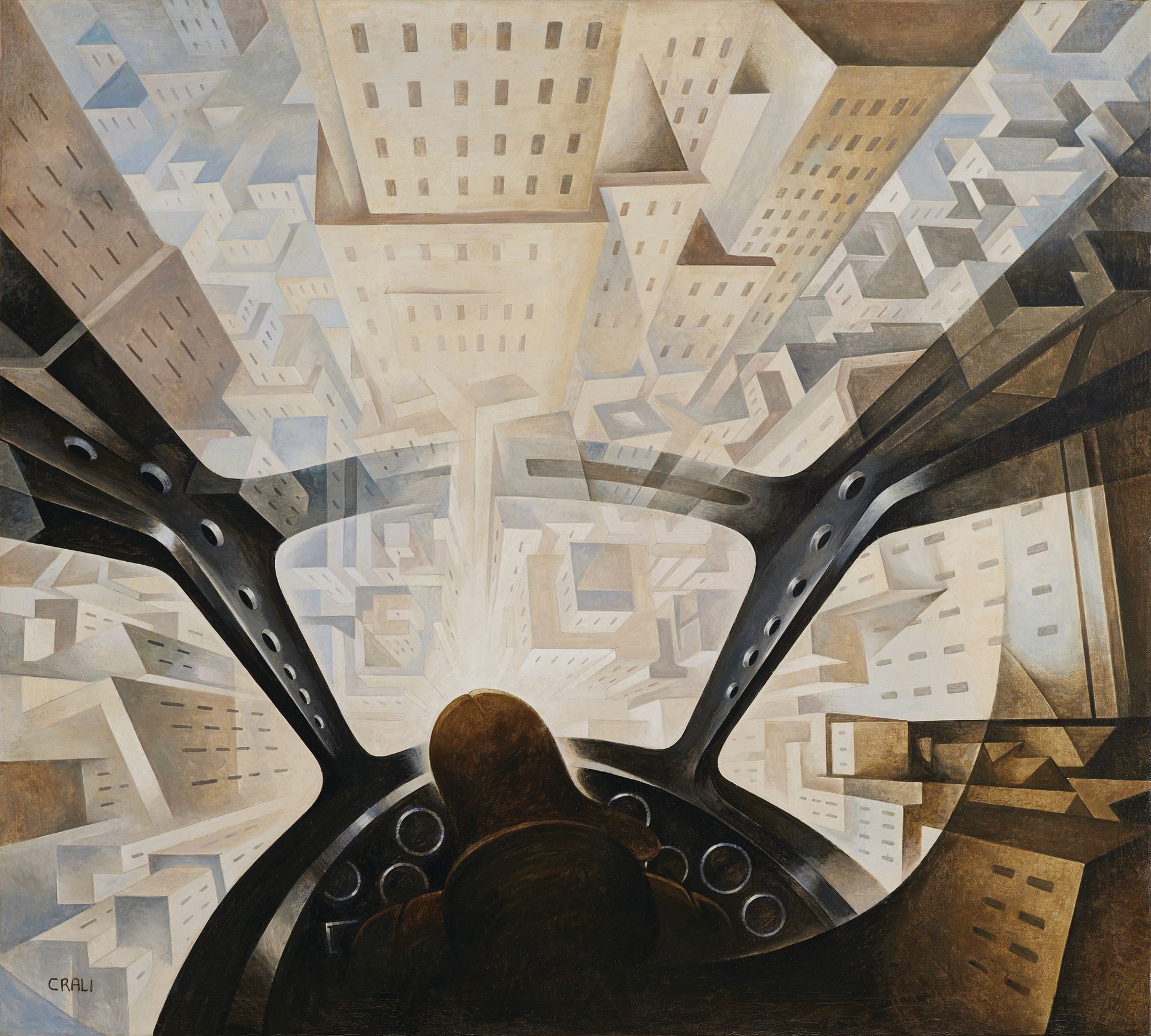
Precipitare sulla città (nose dive on the city)
Tullio Crali (around 1939)
Agnew’s
The swirling, sometimes abstracted, aerial imagery of Futurism’s final incarnation, aeropittura (painting inspired by flight), came about through contact with F.T. Marinetti, the founder of Italian Futurism, and was launched in 1929 with the manifesto Perspectives of Flight. Crali was one of the undisputed stars of the 1938 Venice Biennale and his work was also included in the 1990 exhibition Futurism in Flight: Aeropittura Paintings and Sculpture of Man’s Conquest of Space, at the Accademia Italiana delle Arti e delle Arti Applicate, London. “This is a version of one of his best-known compositions, showing an aerial dive from a pilot’s point of view, the buildings below drawn in dizzying perspective,” says Anthony Crichton-Stuart, the director of Agnew’s gallery. The work is on offer for around €300,000.
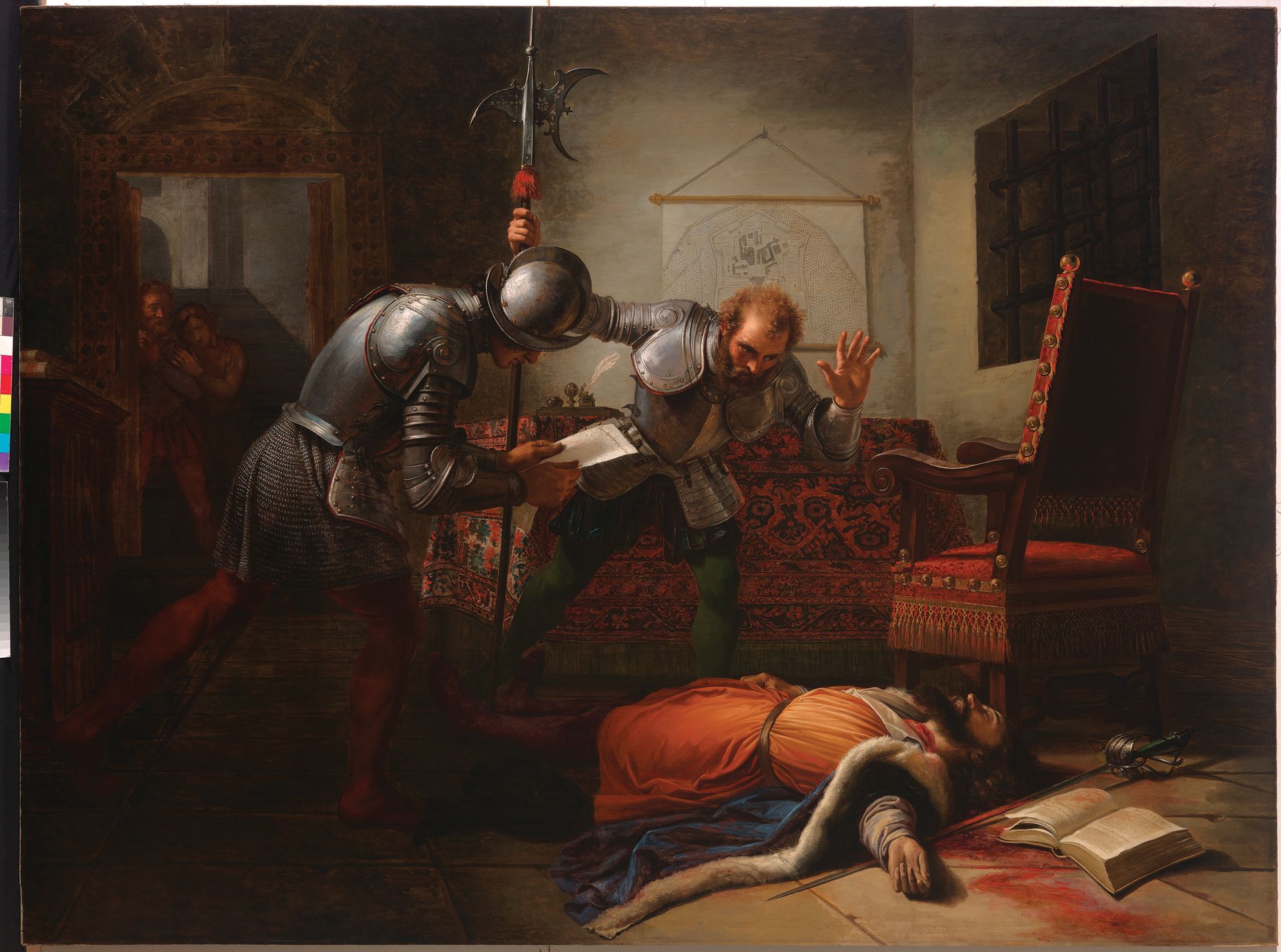
La morte di Filippo Strozzi (the death of Filippo Strozzi)
Giuseppe Bezzuoli (1838)
Carlo Orsi
Bezzuoli’s painting was commissioned by the Tuscan philanthropist and patron Niccolò Puccini, and represents the fervour of the Italian Risorgimento in the 19th century. Filippo Strozzi was a member of the illustrious Strozzi family of Florence, who marched against his city and its ruling Medici family with an army of exiled Florentines. After his defeat at the hands of Cosimo de’ Medici’s hired Spanish mercenaries, he died in prison in 1538, either by suicide or at the hands of Cosimo’s men. “He was a revered figure for intellectuals at the time the piece was painted,” says the Milanese dealer Carlo Orsi, “because he was a symbol of the same patriotic and libertarian political outlook that they themselves harboured.” The work is on sale for around €300,000.

Book of Hours
Paul Limbourg (around 1405-07)
Heribert Tenschert Antiquariat Bibermühle
This illuminated Book of Hours must be one of the greatest, if not the greatest, treasure at Tefaf this year. It is by Paul, one of the three Limbourg brothers who together illuminated the most famous late Medieval manuscript, the exquisitely detailed Très Riches Heures, for the art-loving Jean, duc de Berry. Here, the 30 large ink illustrations may have been intended to be coloured in, but they are so perfect that they may also have been considered complete as they are. The manuscript, executed in around 1405-07, was unknown until it turned up in 2013 in the collection of the Belgian branch of the Castelnau family, in whose possession it may well have been since the 15th century. The Swiss dealer is asking an eight-figure sum for this perfect embodiment of Medieval art, history and prayer.
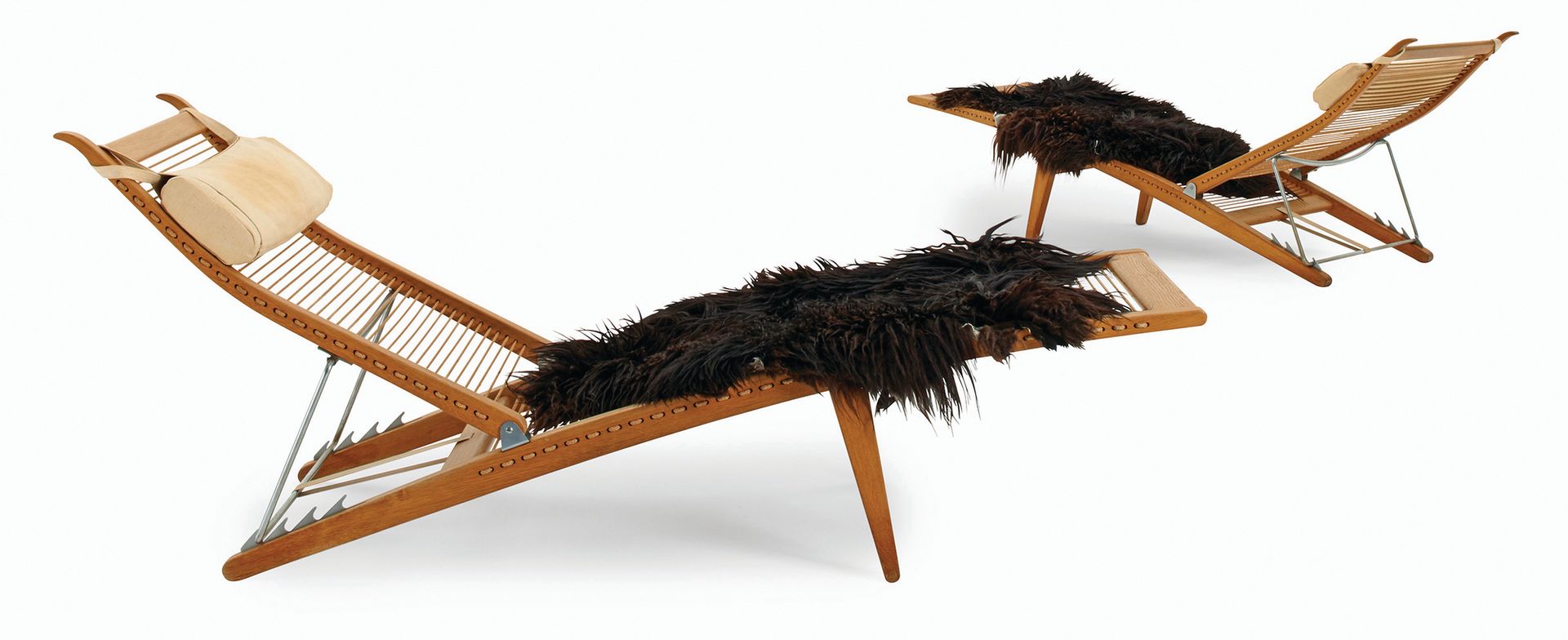
Pair of deck chairs
Designed by Hans J. Wegner, manufactured by Johannes Hansen (1958)
Dansk Møbelkunst, Copenhagen and Paris
The stand of the Copenhagen- and Paris-based gallery Dansk Møbelkunst will feature the great and the good of mid-20th- century Danish furniture design: Finn Juhl, Ejner Larsen and Aksel Bender Madsen, and Arne Jacobsen. Joining this illustrious bunch are pieces by the leading Danish Modern practitioner Hans J. Wegner (1914-2007), who designed more than 500 chairs during a career lasting more than 60 years—a feat that earned him the nickname “the master of the chair”. His Round Chair, which he fondly called “the round one”, became an international household name after its appearance in the first televised US presidential debate between John F. Kennedy and Richard Nixon in 1960. The gallery is offering this elegant pair of deck chairs, made from oak, halyard (line), canvas and steel, for €90,000.
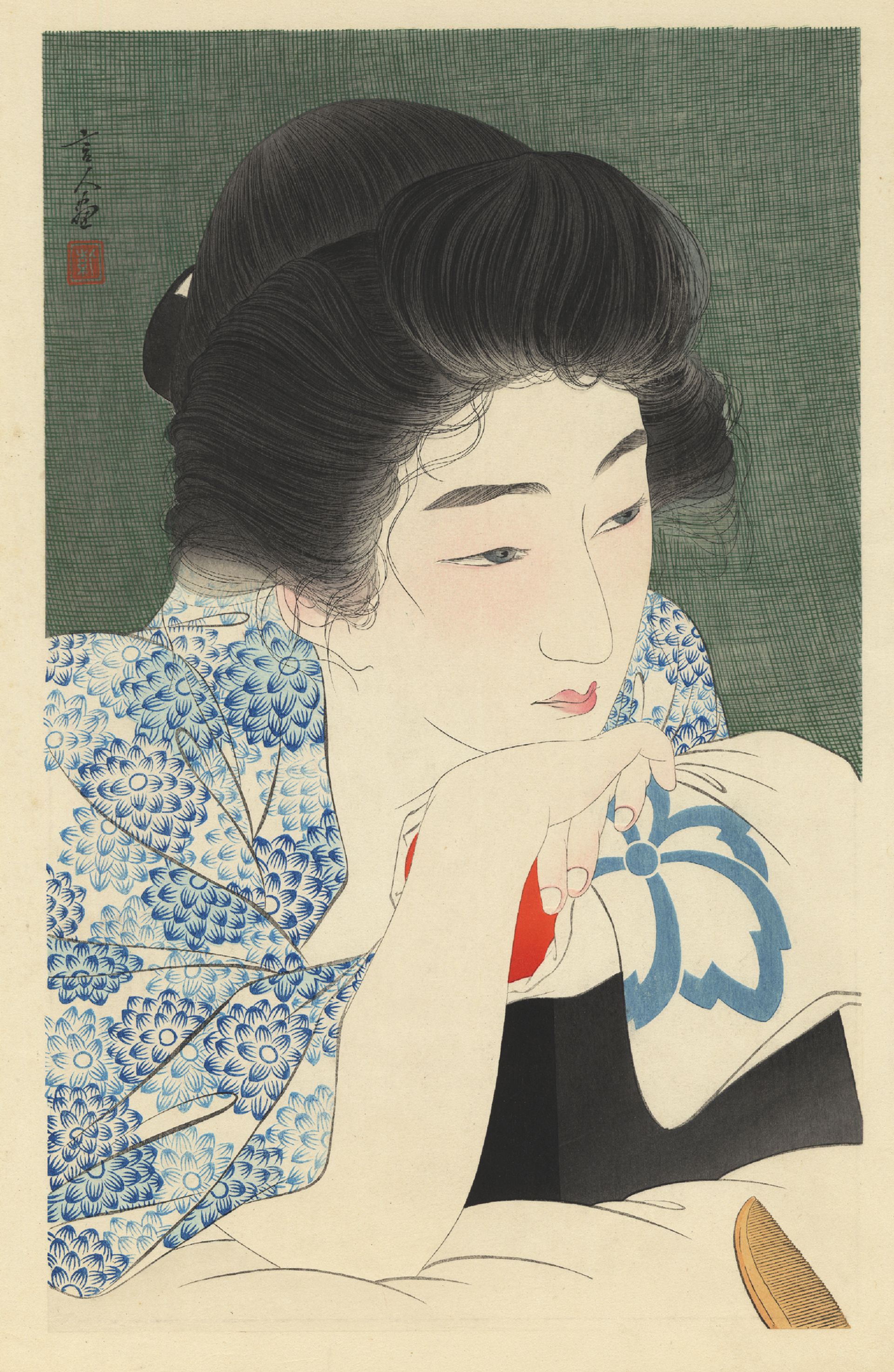
Asa Negami (morning hair)
Torii Kotondo (1930)
Galerie Tanakaya
In the autumn of 1930, police in Tokyo raided the premises of the Ikeda printers and halted production of this print by the artist Torii Kotondo. The subject—a woman waking from sleep, resting her chin on her hand and looking languidly to the side—was deemed too erotic. Unfortunately for the authorities, 70 prints had already been made, and some had already been sold. The leftover prints were seized, but those that had been sold were irrevocably out in the world; one is in Boston, at the Museum of Fine Arts, which is renowned for its collection of Asian art. “This work is undoubtedly one of the artist’s best,” says Michel Balluteau of Galerie Tanakaya. The Parisian gallery is asking between €60,000 and €70,000 for the print.
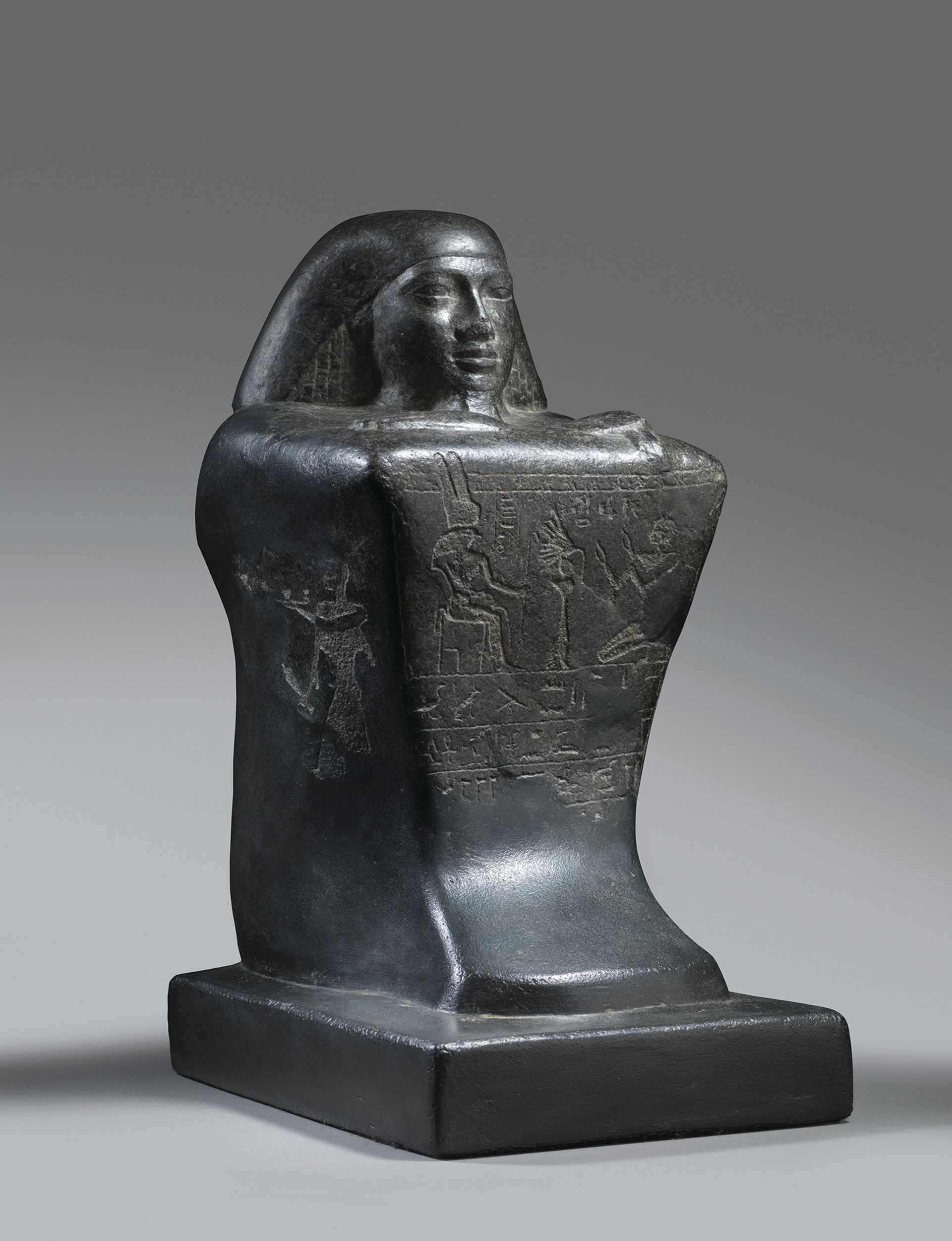
Block statue of Pamiu, the cat
Egyptian, late 25th dynasty (690-650BC)
Rupert Wace Ancient Art
Block statues such as this, in which the deceased are shown seated with their knees drawn up, first appear in the Middle Kingdom and are fairly common by the Late Period. More than 350 block statues, 17,000 bronzes and around 400 other stone sculptures were unearthed by the French Egyptologist Georges Legrain in 1903, beneath the courtyard of the Temple of Amun within the Karnak Temple Complex. A block statue of Pamiu (which translates as cat), who held the titles of prophet and priest of the god Amun at Karnak, was among the cache; the piece is now in the Cairo Museum. This example, being offered by the London-based dealer Rupert Wace, is a second sculpture of Pamiu and is thought to be from the Chapel of Montu in North Karnak. It comes from the descendants of the French Egyptologist Alexandre Varille (1909-51). Its asking price is €1.25m.
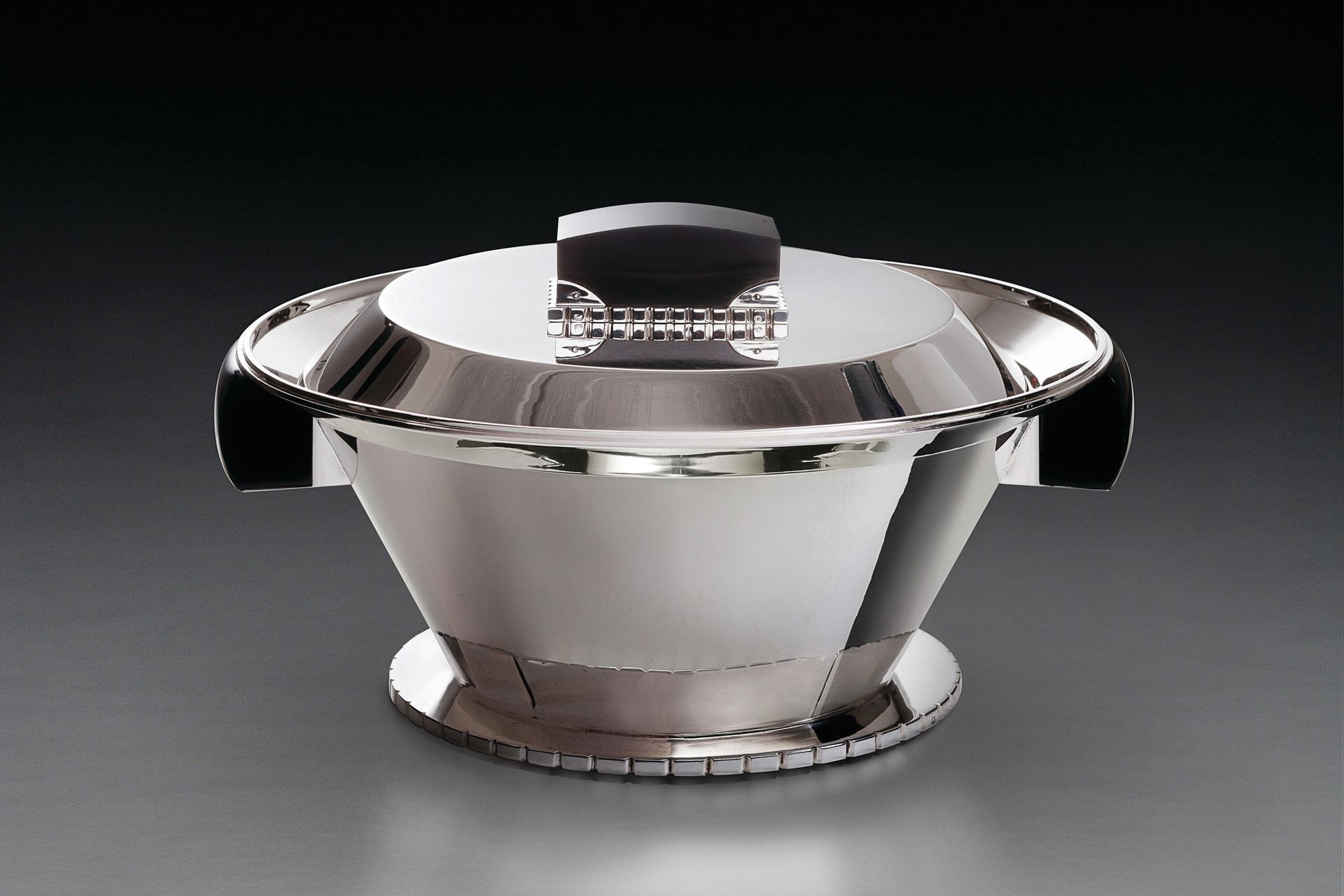
Silver and marble soup tureen
Jean Puiforcat (around 1930)
Francis Janssens Van der Maelen
Jean Puiforcat came from a family of French silversmiths and studied both silversmithing and sculpture. The silver that he designed is considered the best of Art Deco in that material. As with this silver and marble soup tureen, his work is often angular, inspired by the five Platonic geometric forms, and he was a committed Modernist, one of the founding members in 1929 of the influential Union des Artistes Modernes, to which architects such as Le Corbusier and designers such as Jean Prouvé and Robert Mallet- Stevens belonged. Andy Warhol made a large collection of this work in the 1970s, when Art Deco was not considered particularly original or important. The Belgian dealer is asking €58,000 for the piece.
Adam and Eve in the Garden of Eden
Leonhard Kern (around 1614-20)
Kunstkammer Georg Laue
This dense and tense carving shows Adam and Eve hiding among the foliage from God, whom they hear walking in the cool of the Garden of Eden. They are ashamed because they have eaten from the forbidden Tree of Knowledge and, suddenly realising their nakedness, have covered their loins with fig leaves. This exquisite but strong alabaster carving is by the German sculptor Leonhard Kern, made after he had spent two years in Italy. Kern is best known for his ivory carvings, which were famous all over Europe at the time and were included in many Kunstkammern and princely collections. The piece is being offered for €480,000.
Description de l’Égypte
(1809-28)
Daniel Crouch Rare Books
The London-based dealer Daniel Crouch is offering this first edition of the Description de l’Égypte, the first scientific report on Egypt from antiquity to the 19th century, compiled by a team of academics who accompanied Napoleon Bonaparte on his campaign to undermine the influence of Britain in the area. “This edition is particularly special because the Egyptian- influenced furniture it is housed in was made to the designs supplied with the book to the first owner, the Comte de Laveau, who was presented with a copy by Bonaparte himself,” says Crouch, who is asking £500,000 for the publication.
Trajan’s Column
Benjamin Ludwig Jollage and Wilhelm Hopfgarten (around 1820)
Alessandra di Castro Trajan’s Column in Rome, completed in AD113, commemorated the Emperor’s incorporation into the Roman Empire of the Dacians, the people of modern-day Romania. The history of the campaign is told on the spiral around the column, which includes 2,300 figures. This miniature of it, in finely chased gilt bronze, is one of a group of sculptures made in Rome for a princely family by the German goldsmiths Benjamin Ludwig Jollage (1781-1837) and Wilhelm Hopfgarten (1779-1860), both naturalised Romans. These have recently been discovered to be the very highly accomplished makers of such grand souvenirs of the Grand Tour, the journey around Italy that every cultivated aristocrat was expected to make, with Rome and its glorious classical history as its focal point. The asking price for the piece is €120,000.


